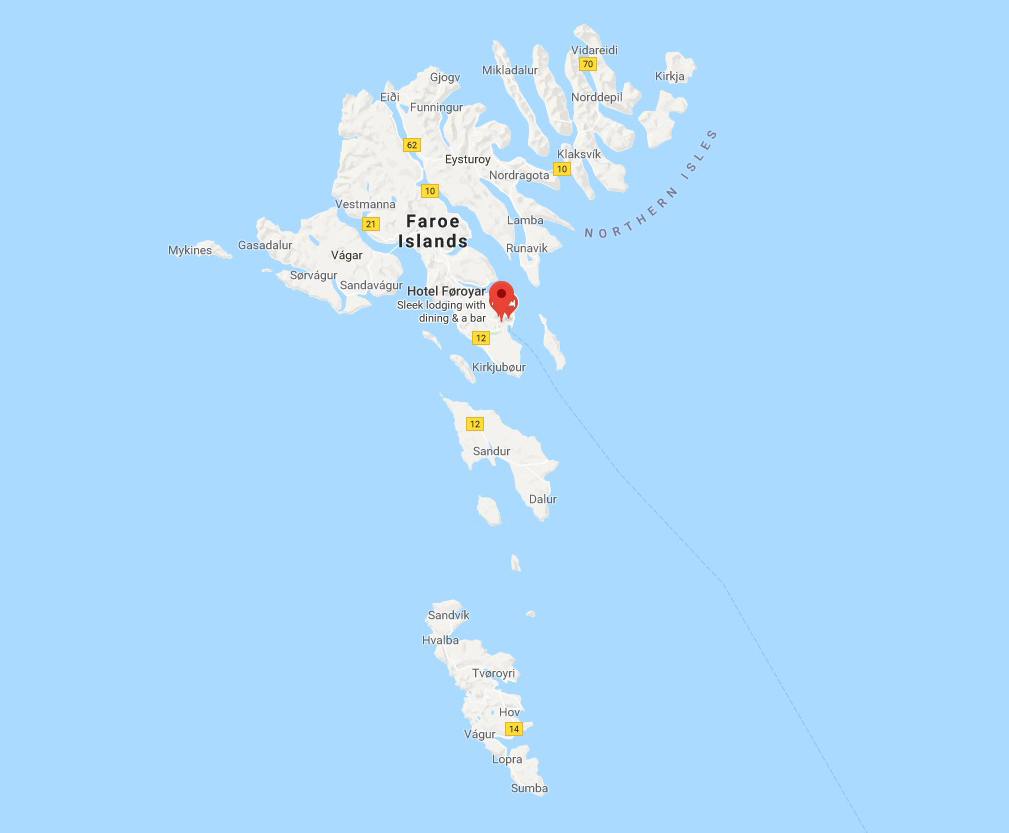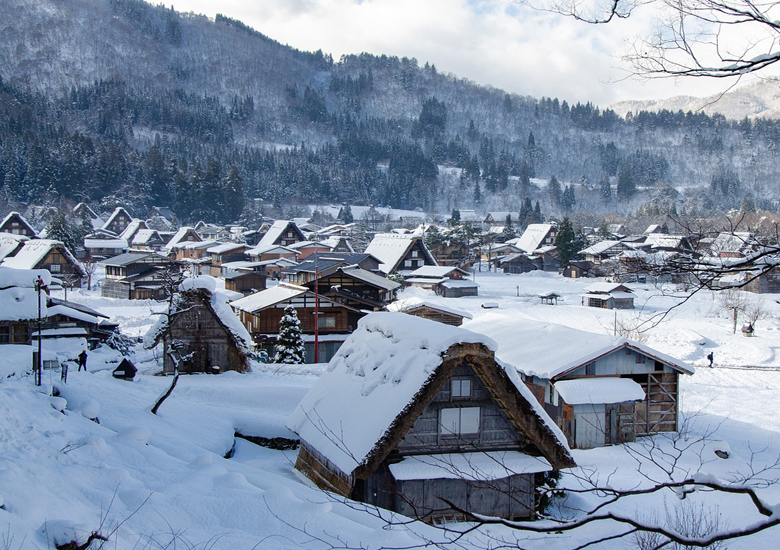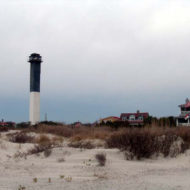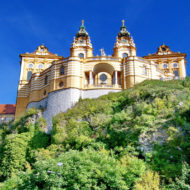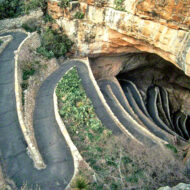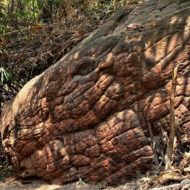Shirakawa-go, is a historical village in Gifu Prefecture, Japan.
Together with Gokayama in Toyama, it was registered as a UNESCO World Heritage Site on December 9, 1995. The village is famous for its farms, which are built in a unique architectural style known as gassho-zukuri. The name means “hands together”, as for a prayer, referring to the steep thatched roofs that prevent snow from accumulating in the winter. Under the roofs, the large attic space was used to house silkworms.
Another thing that made the village famous is the recent Japanese series of games Higurashi no Naku Koro ni (2002) and the animated series that followed. Although the villagers are not so happy that a very violent animated series is taking place in their village, it has nevertheless attracted more tourists. A number of places in the animated series can be visited in Shirakawa, the most common site being the Hachiman Shrine, the site where Rika Furude experienced an unfortunate end and also the major shrine of the village.
Access : Coordinates: 36.270944, 136.898556 /
Highlights :
- Nagase House . 9AM-5PM. The house is well-known for its 11-meter length which comes from single trees used as horizontal beams inside the house
- Wada House , 997 Ogimachi. 9AM-5 PM. This is the largest of the farmhouses in Ogimachi.
- Kanda House , 796 Ogimachi. 9AM-5PM. A well-preserved farmhouse that always has its fire lit
- Gassho-zukuri Minkaen , 2499 Ogimachi. This outdoor museum recreates a village which features functional buildings such as storerooms and a temple
- Jin Homura Art Museum . 9:30AM-4PM. The modern art of Jin Homura’s works featured in a traditional farmhouse
- Shiramizu Falls . A scenic waterfall near Shiramizu Lake.
- Tajima House Museum of Silk Culture : The Tajima House museum is a place dedicated to reviving the history and process of the traditional silk farming industry as it is one of the main industries in pre-modern Shirakawa-go.
- Myozenji Temple Museum : The monk’s residence next to the main temple has been turned into a museum of the temple’s history since 1748, since it’s no longer in use.
Go next : Takayama / Kanazawa / Tonami / Takaoka / Hakusan / Gujo / Ainokura Gassho-zukuri Village.


